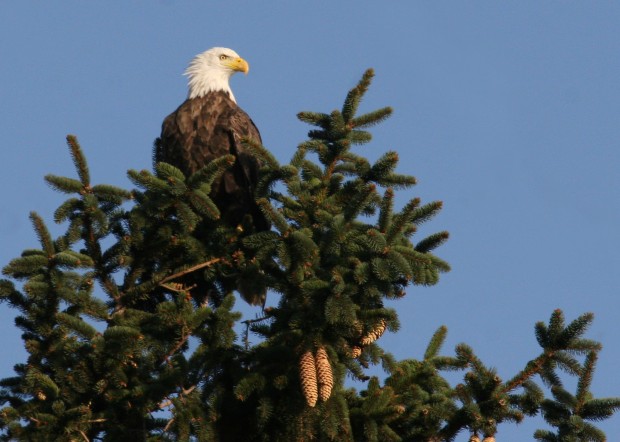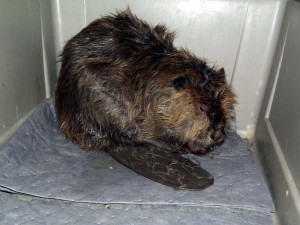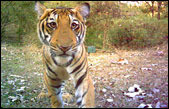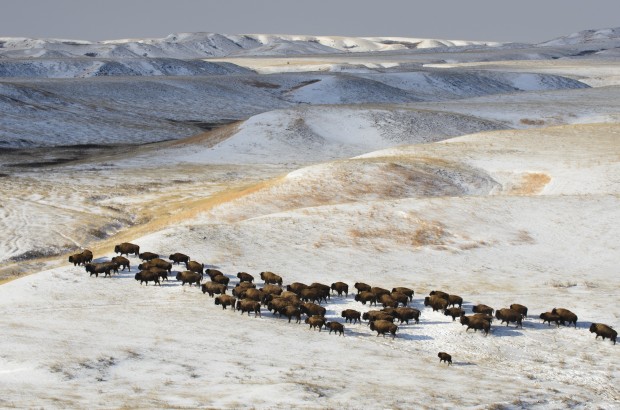For “Mammal Monday”:
Seeds of National Wildlife Week Sprout for Earth Day Celebration
“While celebrating National Wildlife Week in March, we told you about the many roles of trees in the lives of wildlife. Birds, insects and critters — from the diminutive shrew to the huge moose — rely on trees, just as we do in our daily lives. After dedicating National Wildlife Week to a celebration of trees, we also set a goal of planting 75,000 trees this year.

National Wildlife Photo Contest entry by Helen Anderson.
Those efforts began in earnest during National Wildlife Week, and will continue this weekend as Americans observe Earth Day. There are events happening across the country, so please join in and plant a tree this weekend. See if there is a local tree planting happening near you. If not, you can sponsor a tree planting event! And of course, you can donate today to help us reach our goal of planting 75,000 trees.” More at: http://blog.nwf.org/2013/04/seeds-of-national-wildlife-week-sprout-for-earth-day-celebration/ from Wildlife Promise
_______
Controversial Keystone XL pipeline
“Today is Earth Day, the day that millions of Americans pause to celebrate the wonders and natural beauty of our planet and the movement that has grown in the past 40 plus years to protect it.
 Ironically, April 22, 2013, is also the final day of a final public comment period on the controversial Keystone XL pipeline, the proposed massive 1,700 mile long experiment in pumping dirty oil from the Tar Sands in Canada to the Gulf Coast in Texas. Along the way, the proposed Keystone pipeline will crisscross some of the most productive farmland and on the planet, putting the livelihoods of America’s farmers and ranchers and our food supply at risk.
Ironically, April 22, 2013, is also the final day of a final public comment period on the controversial Keystone XL pipeline, the proposed massive 1,700 mile long experiment in pumping dirty oil from the Tar Sands in Canada to the Gulf Coast in Texas. Along the way, the proposed Keystone pipeline will crisscross some of the most productive farmland and on the planet, putting the livelihoods of America’s farmers and ranchers and our food supply at risk.
James Hansen, America’s leading climate scientist has already called Keystone “game over for the climate” if approved. Join tens of thousands of America's farmers and everyday citizen's to Stop Keystone! This Earth Day the stakes couldn’t be higher, Obama has a choice: climate redemption or permanent climate chaos.” http://action.fooddemocracynow.org/sign/save_the_planet_stop_keystone/
---------
Keystone Pipeline Foes Vent in Nebraska
![19keystone1-articleLarge[1] 19keystone1-articleLarge[1]](https://blogger.googleusercontent.com/img/b/R29vZ2xl/AVvXsEh4hXGzh2HNM9ji3T58vsQ1iThuPVfGBOPA2OwA4JraXDKcF47GkLlgo0nbTNx0guGTf7PwUUFTKb8zG3jINRez1J0JEAFnhJ2ImRw-8T8_IFMzWuN6gJvfGsQHFLt1Z6JOhf8WlfM8XiIY/?imgmax=800)
_______
Julie Larsen Maher ©WCS
“The finish line is in sight! Registrants for this month's WCS Run for the Wild are busy getting in shape, collecting donations for elephants, and counting down to the big day. If you'd like to join them, your last chance is now! Sign up today to guarantee your place at the starting line on Saturday, April 27. All adult participants are required to raise at least $30 to help us make tracks for elephants.
Your registration includes:
- Free all-day access to the Bronx Zoo
- Staggered starts for runners and walkers/ families
- Free t-shirt for registered children
- A host of great prizes for fundraisers of all levels”
_______
Beavers Save Bay from Brunt of Spill – But Pay the Price
“When oil spilled in Willard Bay State Park, a beaver dam stopped the fuel in its tracks. Unfortunately, many of the beavers were caught in the fuel.”
One of six beavers caught in an oil spill at a Utah state park rests at a wildlife center. Photo by the Wildlife Rehabilitation Center of Northern Utah.
“Beavers have proved over and over again how valuable they and their impressive dams are. The wetlands created by the dams increase and support biological diversity. The dams filter silt and pollution from water. Recently in northern Utah, beaver dams performed a truly amazing service: they stopped the worst of an oil spill from spreading to a freshwater reservoir.
Unfortunately, the dams couldn’t protect the beavers. The diesel flowing from a break in a pipeline covered beavers, including a mother and her two kits. Volunteers and staffers at the Wildlife Rehabilitation Center of Northern Utah are working to save six of the animals caught in the spill discovered March 18 in wetlands at Willard Bay State Park. All the beavers are improving, although two yearlings exposed to the oil for days are still in rough shape.” More at: http://blog.nwf.org/2013/04/beavers-save-bay-from-brunt-of-spill-but-pay-the-price/
_______
Video of Fur Farm Operating Without License Provokes Outrage
“Estonia's largest fur farm has continued to operate without a license for three years, despite protests from environmentalists who say the living conditions of more than 150,000 animals are highly questionable.
The biggest fur farm complex in the Baltics, Balti Karusnahk, is located 30 kilometers from Tallinn, in Karjaküla. The largely Finnish-owned farm keeps American minks, foxes and raccoon dogs.
Last fall, local animal rights activists secretly filmed animals on the farm, and the footage is shocking. The video - showing badly injured, paralyzed and dead animals - was aired on ETV.” More at: http://animalconnectionblog.blogspot.com/2013/04/video-of-fur-farm-operating-without.html
and: http://www.animal-rights-action.com/fur-farming.html
_______
Ullas Karanth/WCS
“A tiger cub meandering through India's Bhadra Tiger Reserve couldn't resist investigating a remote camera trap set up to monitor local wildlife like itself. Look closely, and you'll see a second camera in the background, which likely snapped images of the curious creature's rear. The more photos, the better. No tiger sports the same pattern of stripes, so researchers are able to use pictures to identify individual cats and track their movements. WCS has worked in the region since the 1980s, and we're delighted to report that Bhadra's tiger numbers are on the rise, thanks to conservation measures.”
______
“The Path of the Pronghorn is the country's only federally designated migration corridor, but until last fall, animals risked vehicular collisions as they navigated the 93-mile-long passage to and from Wyoming's Grand Teton National Park. With the guidance of WCS and partner organizations, highway overpasses were created at key points along the route. A new video documents this innovative solution to providing safe passage for pronghorn, mule deer, moose, elk, and motorists alike.”
_______
Children are the Future
“If there's a child in your life who loves animals and wants to learn more about them, our sister publication Kind News is for them! Kind News features profiles of amazing kids, articles about rescued animals and species in trouble, pet care tips, how-to pieces, and more. Get a free classroom subscription when you subscribe or renew your subscription to Animal Sheltering magazine. Subscribe today, and help make kind kids»”
________
Spring Kicks Off Wildlife Baby Boom
 Human intervention may result in orphaned babies, injured wildlife.
Human intervention may result in orphaned babies, injured wildlife.
“Wildlife baby season is here, which means people may come face-to-face with newborn animals during their spring-cleaning. Wild animals can be accidentally injured or orphaned when people trim trees, mow lawns, clean chimneys or find them trapped or nesting indoors.
There is good chance that this time of year homeowners might hear tiny footsteps in the attic, scratching in the walls or even chatter in the chimney. This commotion is typically related to a squirrel or raccoon mom who has taken advantage of an opening to raise her newborn babies. While there are humane and effective solutions to solving these wildlife conflicts, many people take action that not only unnecessarily harms animals, but ends up costing much more than it would have if done right the first time.” More at: http://www.humanesociety.org/news/press_releases/2013/04/wildlife-baby-season-041113.html
______
Kill the Bad Bills, Not the Buffalo
Bison grazing on the Fort Peck Reservation.
“Last March marked a historic step forward in restoring wild bison to the American prairies when more than 60 bison from Yellowstone National Park were released on the Fort Peck Reservation in eastern Montana. Tribal members from Fort Peck and Fort Belknap, conservationists, and their supporters braved a cold, snowy night to watch as the animals bolted out of the trailers that had carried them 500 miles to their new home. Former Montana Gov. Brian Schweitzer joined in a community celebration the next day among the rolling hills outside the pen holding the new arrivals.
It was a huge milestone in efforts to restore bison to the wild. The bison is the one large mammal driven to near extinction that hasn’t been re-established on the Western landscape. Elk, deer, big-horn sheep
As important as the transfer of bison to Fort Peck was, a barrage of anti-bison bills in the Montana Legislature makes clear that the path to further progress will be anything but smooth. It’s time for a halt to the war on bison. Will you stand with the tribes and their conservation allies? Will you stand with the bison?” More at: http://blog.nwf.org/2013/04/kill-the-bad-bills-not-the-buffalo/ from Wildlife Promise
________
On This Day:
The first Earth Day, Apr 22, 1970:
“Earth Day, an event to increase public awareness of the world's environmental problems, is celebrated in the United States for the first time. Millions of Americans, including students from thousands of colleges and universities, participated in rallies, marches, and educational programs.
Earth Day was the brainchild of Senator Gaylord Nelson of Wisconsin, a staunch environmentalist who hoped to provide unity to the grassroots environmental movement and increase ecological awareness. "The objective was to get a nationwide demonstration of concern for the environment so large that it would shake the political establishment out of its lethargy," Senator Nelson said, "and, finally, force this issue permanently onto the national political agenda." Earth Day indeed increased environmental awareness in America, and in July of that year the Environmental Protection Agency was established by special executive order to regulate and enforce national pollution legislation.
On April 22, 1990, the 20th anniversary of Earth Day, more than 200 million people in 141 countries participated in Earth Day celebrations. Earth Day has been celebrated on different days by different groups internationally. The United Nations officially celebrates it on the vernal equinox, which usually occurs about March 21.”
_______
Former President Richard Nixon dies, Apr 22, 1994:
“On this day in 1994, former President Richard M. Nixon dies after suffering a stroke four days earlier. In a 1978 speech at Oxford University, Nixon admitted he had screwed up during his presidency but predicted that his achievements would be viewed more favorably with time. He told the young audience, "You'll be here in the year 2000, see how I am regarded then."
Nixon did not owe his success in politics to personality or charm: in fact, even many of his staunch supporters described him as cold, aloof, crude, arrogant and paranoid. His paranoia of political sabotage by his opponents had inspired him to authorize the wire-tapping of enemies and supporters alike. Ironically, it was the conversations he taped in his own office that led to his ultimate downfall.
Nixon was correct in assuming that some aspects of his leadership would be judged favorably with the passage of time. These include his bold efforts to improve diplomatic relations with China and Russia, as well as pushing lasting and influential legislation through Congress. Nixon's legislative legacy includes the National Environmental Policy Act, passed in 1969, which created the Environmental Protection Agency (EPA), the Clean Water Act of 1972 and the Endangered Species Act of 1973. He also lowered the voting age to 18, established Amtrak, launched the space-shuttle program and authorized the formation of the Occupational Safety and Health Administration (OSHA). During his retirement, several subsequent presidents consulted Nixon for his expertise in international affairs.
Nixon and his wife Pat are both buried on the grounds of his birthplace in Yorba Linda, California. The site is also the home of the Richard Milhous Nixon Presidential Library.”
_______
Yesterday:

Someone asked what is a ‘diluted calico’ cat, so I took some pictures.

She is gradually learning that the kitchen is MY territory, and “Get Down” means not to get up on counters and refrigerators.
Taking care of her and Misty, catching up on emails, researching things on the web, and installing my new doorbell took up most of the day.




























4 comments:
She's a beautiful cat. I've never seen one like her although we always had calicos on the farm.
Gumdrop says "Thank you", Sandra.
I brought a calico cat with me from England when I immigrated here, but she had much darker splotches.
Happy Trails, Penny
She is purrrrty kat!! LOL But I'm betting she has never had a mom before that is in as much control as you will be....
Thanks for your comment, Rod.
I don't want to control her, I just want her to learn where the boundries are.
Happy Tails and Trails, Penny
Post a Comment